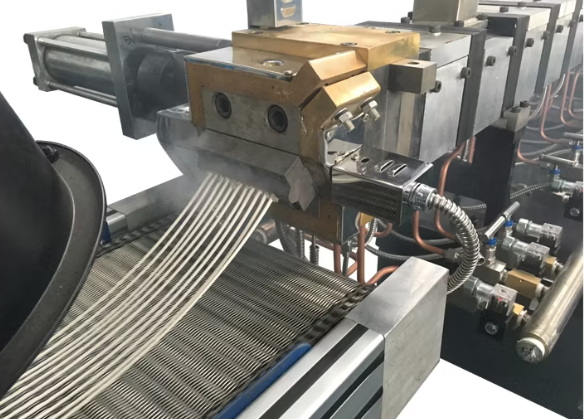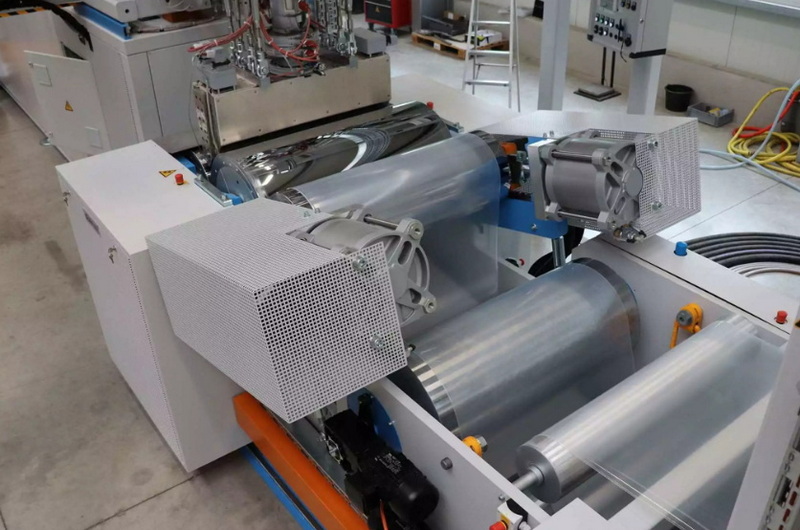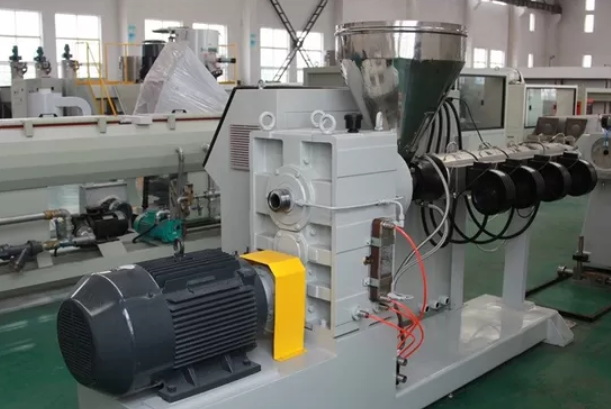Content Menu
● Principles of Sustainable Living
● Benefits of Sustainable Living
● Practical Strategies for Sustainable Living
>> 1. Home and Garden
>> 2. Food and Nutrition
>> 3. Transportation
>> 4. Consumerism
>> 5. Community Engagement
● Challenges and Solutions
● Sustainable Living in Different Contexts
>> Urban Settings
>> Rural Settings
>> Workplace Sustainability
● Technology and Sustainable Living
● Education and Awareness
● Conclusion
● Frequently Asked Questions (FAQs)
>> 1. What is sustainable living?
>> 2. How can I start living sustainably?
>> 3. Is sustainable living expensive?
>> 4. How can I encourage others to live sustainably?
>> 5. What role does community play in sustainable living?
In recent years, the concept of sustainable living has gained significant attention worldwide. As concerns about climate change, environmental degradation,plastic extrusion machines and resource depletion continue to grow, individuals and communities are increasingly adopting sustainable practices to reduce their ecological footprint. Sustainable living involves making conscious choices in daily life to minimize harm to the environment, conserve natural resources, and promote social equity. This article will delve into the principles of sustainable living, its benefits, and practical strategies for implementation.

Principles of Sustainable Living
Sustainable living is based on several key principles that guide individuals and communities towards a more environmentally friendly lifestyle. These principles include:
1. Reduce, Reuse, Recycle: This mantra is fundamental to sustainable living. Reducing consumption, reusing items when possible, and recycling materials can significantly decrease waste and conserve resources. For example, reducing paper usage by switching to digital documents, reusing bags and containers, and recycling paper, plastic, and glass can make a substantial impact.
2. Energy Efficiency: Using energy-efficient appliances and renewable energy sources like solar or wind power can reduce reliance on fossil fuels and lower carbon emissions. Simple actions such as turning off lights when not in use or upgrading to LED bulbs can contribute to energy efficiency.
3. Sustainable Consumption: Choosing products with minimal packaging, buying locally sourced goods, and supporting sustainable agriculture are ways to promote environmentally responsible consumption. This includes opting for products with biodegradable packaging and purchasing from local farmers to reduce transportation emissions.
4. Conservation of Water: Implementing water-saving measures such as using low-flow fixtures and collecting rainwater can help conserve this vital resource. Installing rain barrels to collect rainwater for gardening and using low-flow showerheads are effective ways to reduce water consumption.
5. Social Responsibility: Supporting fair labor practices, advocating for environmental policies, and engaging in community activities that promote sustainability are essential aspects of sustainable living. This includes buying from companies that adhere to fair labor standards and participating in local environmental initiatives.
Benefits of Sustainable Living
Adopting sustainable practices offers numerous benefits for individuals, communities, and the environment. Some of the key advantages include:
1. Environmental Protection: Sustainable living helps reduce pollution, protect biodiversity, and mitigate climate change by decreasing greenhouse gas emissions. By reducing carbon emissions, we can slow down global warming and preserve ecosystems.
2. Economic Savings: Energy-efficient practices and reduced consumption can lead to significant cost savings over time. For instance, using energy-efficient appliances can lower electricity bills, and reducing water consumption can decrease water bills.
3. Improved Health: Sustainable living often involves healthier lifestyle choices, such as consuming organic foods and reducing exposure to harmful chemicals. Eating locally grown organic produce can reduce exposure to pesticides and improve overall health.
4. Community Building: Engaging in sustainable activities can foster a sense of community and promote social cohesion. Participating in community gardens or local clean-up events can bring people together and create a sense of shared responsibility.
5. Long-term Sustainability: By conserving resources and reducing waste, sustainable living ensures a more sustainable future for generations to come. This involves preserving natural resources so that future generations can meet their needs without compromising the environment.
Practical Strategies for Sustainable Living
Implementing sustainable practices in daily life can be straightforward and impactful. Here are some practical strategies:
1. Home and Garden
- Energy Efficiency: Install solar panels, use LED bulbs, and upgrade to energy-efficient appliances. Solar panels can significantly reduce reliance on fossil fuels, while LED bulbs consume less energy than traditional incandescent bulbs.
- Water Conservation: Fix leaks promptly, use low-flow showerheads, and collect rainwater for gardening. Rainwater collection systems can be installed to store rainwater for non-potable uses like watering plants.
- Gardening: Plant native species, use compost, and adopt permaculture techniques to create a sustainable garden. Native plants require less maintenance and support local biodiversity, while composting reduces waste and enriches soil.
2. Food and Nutrition
- Local and Organic: Buy locally sourced, organic produce to support sustainable agriculture and reduce carbon footprint. Locally grown produce reduces transportation emissions, and organic farming avoids harmful pesticides.
- Reduce Food Waste: Plan meals, use up leftovers, and compost food scraps. Meal planning helps avoid buying too much food that might go to waste, while composting turns food scraps into nutrient-rich soil.
- Plant-Based Diet: Incorporate more plant-based meals into your diet to reduce greenhouse gas emissions associated with meat production. Animal agriculture is a significant contributor to greenhouse gas emissions, so reducing meat consumption can have a substantial environmental impact.
3. Transportation
- Public Transport: Use public transport, walk, or bike whenever possible to reduce reliance on fossil fuels. Public transport reduces the number of vehicles on the road, decreasing emissions and traffic congestion.
- Electric Vehicles: Consider switching to an electric vehicle for personal transportation. Electric vehicles produce zero tailpipe emissions, reducing air pollution and greenhouse gas emissions.
- Carpooling: Share rides with friends or colleagues to reduce the number of vehicles on the road. Carpooling not only reduces emissions but also saves fuel costs.
4. Consumerism
- Minimalism: Adopt a minimalist lifestyle by reducing unnecessary purchases and focusing on quality over quantity. Minimalism reduces waste and encourages the purchase of durable, long-lasting products.
- Second-Hand Shopping: Buy second-hand clothing and furniture to reduce waste and support sustainable consumption. Second-hand shopping reduces the demand for new, resource-intensive products.
- Eco-Friendly Products: Choose products with minimal packaging and those made from sustainable materials. Opting for products with biodegradable packaging and sustainable materials reduces waste and supports environmentally responsible manufacturing.
5. Community Engagement
- Volunteer: Participate in local environmental initiatives and community clean-up events. Volunteering for environmental projects helps build community awareness and contributes to tangible environmental improvements.
- Advocate for Policy Change: Support policies that promote sustainability and environmental protection. Advocating for environmental policies can lead to systemic changes that benefit the environment and society.
- Educate Others: Share knowledge about sustainable living with friends and family to inspire broader change. Educating others can create a ripple effect, encouraging more people to adopt sustainable practices.

Challenges and Solutions
Despite the many benefits of sustainable living, there are challenges that individuals may face when trying to adopt these practices. Some common obstacles include:
1. Cost: Some sustainable products or technologies can be more expensive upfront.
- Solution: While initial costs may be higher, many sustainable choices lead to long-term savings and benefits. For example, solar panels may be expensive to install, but they can significantly reduce electricity bills over time.
2. Accessibility: Not everyone has access to sustainable options due to geographical or socio-economic factors.
- Solution: Advocate for policy changes that increase access to sustainable resources and support community initiatives that promote equity. This could involve lobbying for subsidies on sustainable technologies or supporting local projects that bring sustainable options to underserved communities.
3. Behavioral Change: Changing habits can be difficult.
- Solution: Start with small changes and gradually build towards more significant lifestyle adjustments. For instance, begin by reducing meat consumption one day a week and gradually increase the number of plant-based meals.
4. Information Overload: With so much information available, it can be overwhelming to know where to start.
- Solution: Focus on one area at a time. Start with simple changes like reducing energy consumption or using public transport, and gradually expand to other areas.
5. Social Pressure: Sometimes, societal norms or peer pressure can discourage sustainable behaviors.
- Solution: Engage with like-minded individuals through community groups or online forums. Sharing experiences and tips with others who are also committed to sustainability can provide motivation and support.
Sustainable Living in Different Contexts
Sustainable living can be applied in various contexts, from urban to rural settings. Here are some considerations for different environments:
Urban Settings
- Apartment Living: Use energy-efficient appliances, reduce water consumption, and participate in community recycling programs.
- Community Gardens: Engage in urban gardening initiatives to grow local produce and promote community interaction.
- Public Transport: Utilize public transport systems to reduce reliance on personal vehicles.
Rural Settings
- Renewable Energy: Consider installing solar panels or wind turbines to generate renewable energy.
- Sustainable Agriculture: Practice permaculture or organic farming to maintain soil health and biodiversity.
- Water Conservation: Implement rainwater harvesting systems to conserve water for irrigation and other non-potable uses.
Workplace Sustainability
- Energy Efficiency: Encourage the use of energy-efficient lighting and equipment in the workplace.
- Sustainable Practices: Implement recycling programs and reduce paper usage by switching to digital documents.
- Employee Engagement: Educate employees about sustainable practices and encourage them to participate in environmental initiatives.
Technology and Sustainable Living
Technology plays a crucial role in facilitating sustainable living by providing innovative solutions and tools to monitor and manage environmental impact. Some examples include:
1. Smart Home Devices: These devices can optimize energy consumption by automatically turning off lights and appliances when not in use.
2. Eco-Friendly Apps: Apps can help track carbon footprint, provide tips for sustainable living, and connect users with local environmental initiatives.
3. Renewable Energy Systems: Advanced technologies in solar and wind energy have made these sources more efficient and accessible.
By leveraging technology, individuals can make more informed choices about their environmental impact and adopt more sustainable practices with ease.
Education and Awareness
Education is a key component of promoting sustainable living. By teaching children and adults about the importance of sustainability, we can inspire a broader cultural shift towards environmentally conscious behaviors. Educational programs can focus on:
1. Environmental Literacy: Teach about ecosystems, climate change, and the impact of human actions on the environment.
2. Sustainable Skills: Provide practical skills in gardening, energy efficiency, and waste management.
3. Community Engagement: Encourage participation in environmental projects and community events to foster a sense of responsibility and community involvement.
Conclusion
Sustainable living is a powerful tool for creating a healthier, more equitable world. By understanding the principles of sustainability and implementing practical strategies in daily life, individuals can contribute significantly to environmental protection and social justice. As more people adopt sustainable practices, the collective impact can lead to substantial positive change. Embracing sustainable living not only benefits the planet but also enhances personal well-being and fosters stronger, more resilient communities.

Frequently Asked Questions (FAQs)
1. What is sustainable living?
- Sustainable living involves making conscious choices to reduce one's ecological footprint, conserve natural resources, and promote social equity.
2. How can I start living sustainably?
- Begin by making small changes such as reducing energy consumption, using public transport, and buying locally sourced products. Gradually incorporate more sustainable practices into your lifestyle.
3. Is sustainable living expensive?
- While some sustainable products may be more expensive initially, many sustainable choices lead to long-term savings and benefits.
4. How can I encourage others to live sustainably?
- Share your experiences, educate others about the benefits of sustainable living, and support community initiatives that promote sustainability.
5. What role does community play in sustainable living?
- Community engagement is crucial for sustainable living. It fosters a sense of responsibility, promotes collective action, and supports policy changes that benefit the environment and society.






















